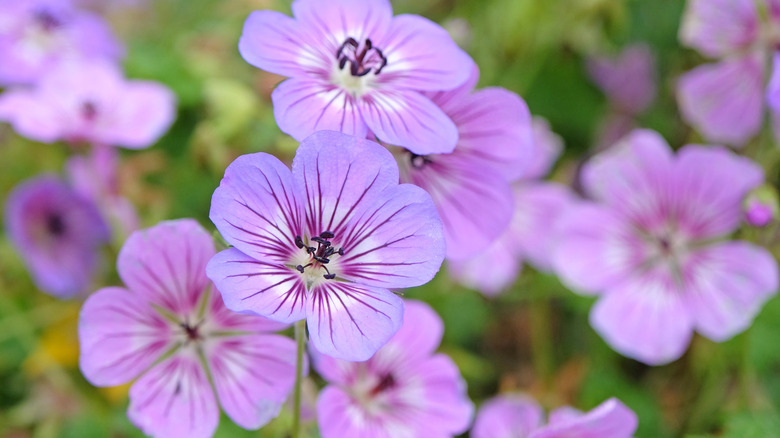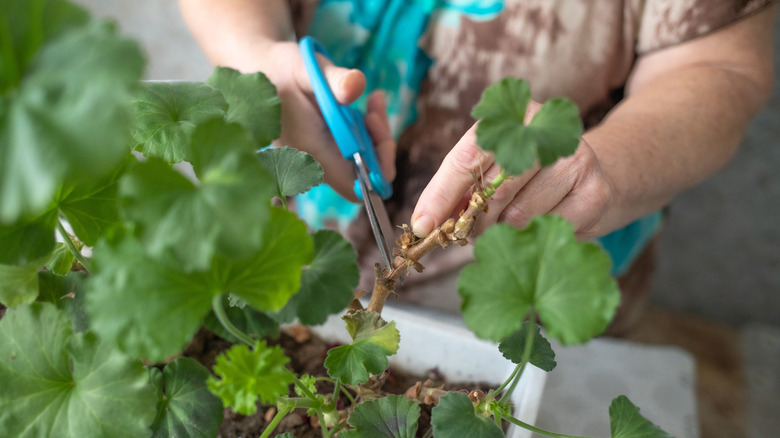Make Your Hardy Geraniums Bloom Again With One Quick And Easy Gardening Tip
Hardy geraniums are a wonderful addition to any garden, helping to attract butterflies and bees. These flowering plants are one of a group of perennials that will bloom more than once for a colorful garden year-round, providing you know how to correctly look after them. Of all the mistakes to avoid when pruning your plants, the one concerned with geraniums may surprise you. If you want your geraniums to bloom again, you'll need to be brave and cut the entire plant back to a few inches above the ground.
Consisting of many cultures, species and hybrids within the Geranium genus, hardy geraniums are low-growing and dense plants that can provide excellent coverage in your garden. Suiting either full sun or partial shade, these plants are easy to maintain and produce small, 1-inch flowers from mid-summer through to the first frosts. They also come in a wide range of colors — expect to find white, blue, pink, magenta, purple, lavender and blue flowers poking through neighboring plants and foliage. These beautiful flowers will provide color in your garden for long periods of time, and all you need to do is provide the right conditions and pruning requirements.
How to prune your geraniums to encourage re-blooming
Because of hardy geraniums' ability to spread, the plants can begin to look a little disheveled after their first flowering, and they're not easy to deadhead because of their thin stems. Fortunately, these plants live up to their hardy name and can withstand harsh pruning. Drastic as it sounds, you should cut back your entire geranium plant to a few inches above the ground after its first set of flowers have started to die. Use shears or secateurs to cut geraniums back to just above the base of the plant to remove dying flowers as well as any foliage that looks tired. This will help promote new growth and can also lead to a second flush of blooms.
Hardy geraniums don't need a lot of care to keep them healthy. Thriving in moist but well-drained soil, you may need to water them as the weather warms up, but take care not to drown them. Consider the addition of a thick layer of mulch to keep your plants healthy and happy. Feeding is not necessary unless your plants are showing a nutrient deficiency, but beware of common mistakes when fertilizing your garden.

